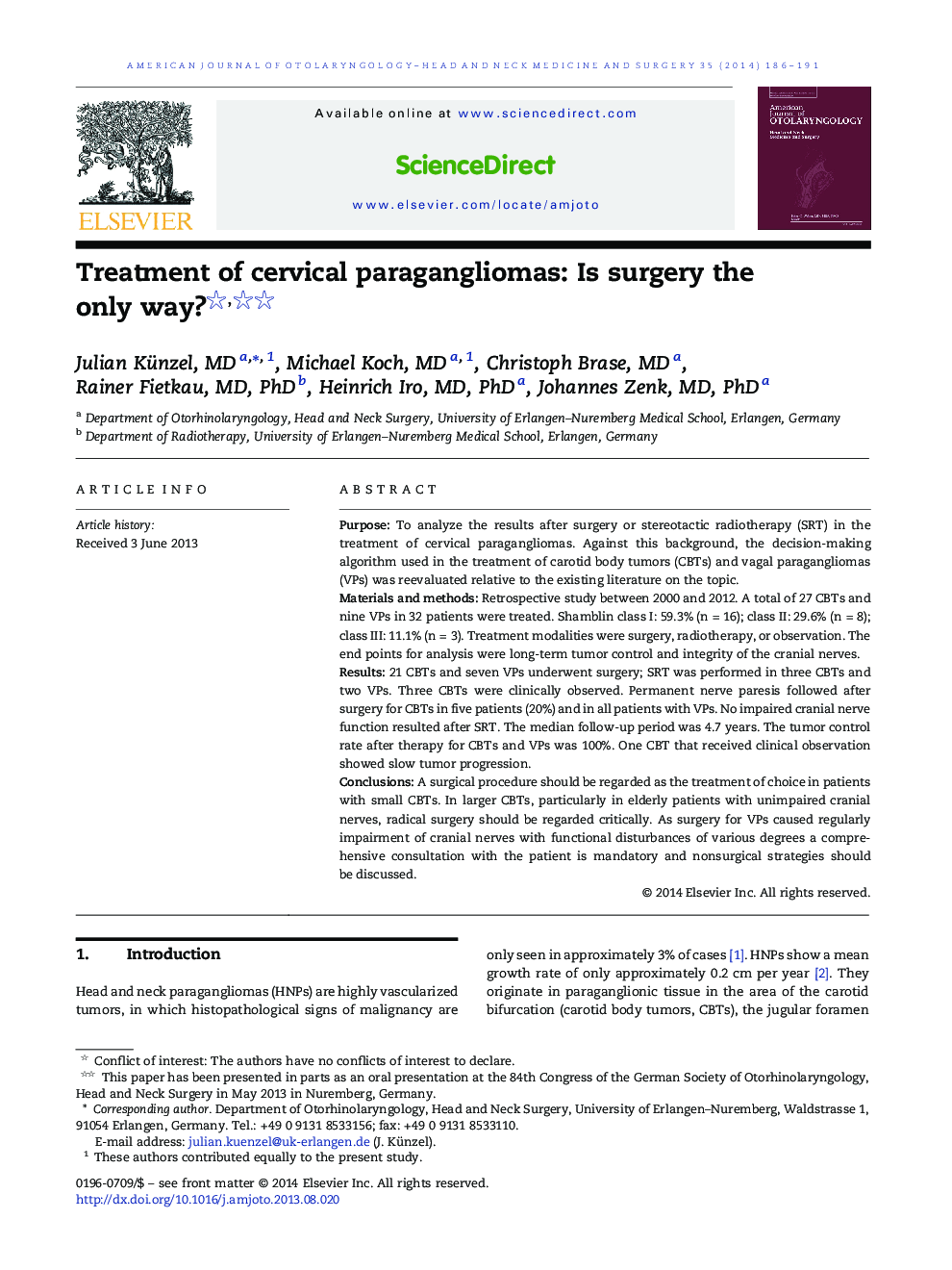| Article ID | Journal | Published Year | Pages | File Type |
|---|---|---|---|---|
| 4103497 | American Journal of Otolaryngology | 2014 | 6 Pages |
PurposeTo analyze the results after surgery or stereotactic radiotherapy (SRT) in the treatment of cervical paragangliomas. Against this background, the decision-making algorithm used in the treatment of carotid body tumors (CBTs) and vagal paragangliomas (VPs) was reevaluated relative to the existing literature on the topic.Materials and methodsRetrospective study between 2000 and 2012. A total of 27 CBTs and nine VPs in 32 patients were treated. Shamblin class I: 59.3% (n = 16); class II: 29.6% (n = 8); class III: 11.1% (n = 3). Treatment modalities were surgery, radiotherapy, or observation. The end points for analysis were long-term tumor control and integrity of the cranial nerves.Results21 CBTs and seven VPs underwent surgery; SRT was performed in three CBTs and two VPs. Three CBTs were clinically observed. Permanent nerve paresis followed after surgery for CBTs in five patients (20%) and in all patients with VPs. No impaired cranial nerve function resulted after SRT. The median follow-up period was 4.7 years. The tumor control rate after therapy for CBTs and VPs was 100%. One CBT that received clinical observation showed slow tumor progression.ConclusionsA surgical procedure should be regarded as the treatment of choice in patients with small CBTs. In larger CBTs, particularly in elderly patients with unimpaired cranial nerves, radical surgery should be regarded critically. As surgery for VPs caused regularly impairment of cranial nerves with functional disturbances of various degrees a comprehensive consultation with the patient is mandatory and nonsurgical strategies should be discussed.
